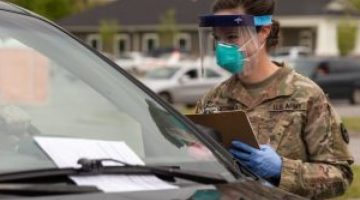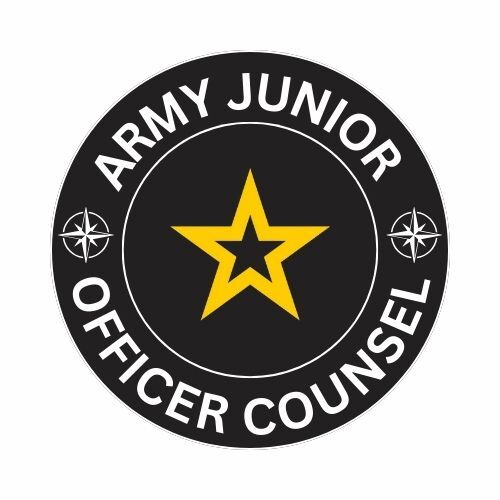Leadership Lessons Learned from COVID Command

A simple phone call challenged everything I knew and believed about leadership. I’ve blogged about the importance of leading with why, why you can’t motivate your way to success, and the importance of appreciation. The challenges of commanding the COVID Task Force drew on every one of these ideas and introduced new ones.
It was a simple enough Tuesday evening when I received a phone call from the State Surgeon’s office (division surgeon) and a simple enough request, can you come in and help us plan some stuff for the General on COVID testing. Within 72 hours my company would not only be activated but become the nucleus for the State’s response to COVID testing. We became a battalion task force and grew by the weekend from 72 to almost 400. As a battalion task force, we became responsible for oversight of four company size elements. A sister Medical Company in the east, an Air Guard “Company” in the West and two Companies in the middle. Before I left, I also received a company of MPs to assist traffic control at our testing sites. I received a battalion staff from all over the State and my focus shifted from execution to mission command.
Lesson 1. Prepared Leadership teams are a must. As a commander I trained the company to be ready. I joked that we were the State’s 911 for medical disasters. Many of our field training exercises were built around the idea of responding to a MASCAL. I challenged the teams to push hard and train in an environment where confusion was normal. These lessons paid off because the process from alert order to execution was chaotic. However, my team had learned how to manage chaos and the value of understanding intent and endstate. As a commander I had learned to trust their decision making.
Lesson 2. End state, end state, end state. By law we acted as a supporting agency to the civilian department of health. This meant that we were not driving and blind obedience to a quickly drafted OPORD or FRAGO wasn’t feasible. Officers at the division level would include in tasks to subordinate units contradicting orders. I was ordered to collapse a site in one paragraph and prepare to support extended testing in the next paragraph. When these events occurred, leaders had to understand missions overall end state and intent and make decisions in real time. Many times, without calling higher for guidance. But because we focused on the value of End State, we accomplished the mission.
Lesson 3. Enabler in Chief. I went from a Company Commander to a BN Task Force Commander overnight. My task force was stretched over 400 miles across two time zones and ALL of it was front line. I could not actually lead from a front anymore. Battlefield circulation was a goal, but it was not feasible. While my leadership team did get out, I learned that to be effective my job was to
- Make a decision – understand the CG and BDE CDR’s intents and act to support the goal.
- Clearly communicate that decision – why and endstate!
- Use my influence and manage up skills to get my teams what they needed to do the job. The troops cared more about getting what they needed than a shared commiseration session with me.
Lesson 4. It’s all about the relationship. Although I had more people and tools at my disposal than ever before it still was not enough. Even though, for the first time ever, medical was a main effort I still had to negotiate for time and resources. I had to negotiate and leverage professional relationships.
Lesson 5. Reputation matters. Part of my job was to be my Task Force’s top cheer leader. The CG receives a lot of data and gets it from a lot of sources. Inevitably, they develop trusted agents of truth. Take the time to make sure you are trusted. We developed a report just like everyone else and there were times when higher would “help” us by “fixing a slide”. As you can imagine this led to some hard questions. Being able to share high quality product and estimates to the boss was critical to our success in winning the reputation war. However, do not forget about lesson 4: it’s about the relationship. Do not burn a bridge to be right.
Lesson 6. I am only successful if they are. My success as a commander is ultimately tied to the success for the team I am leading. To succeed I must set them up to be successful. Ultimately that is the mission for a commander. Put the right people in the right place with the right things to get what you need done – done.
If I could summarize what I learned in a single sentence it would be; as a leader it is my job to make good decisions and enable my teams to effectively do theirs. As with many truisms, it sounds simple but that does not make it easy. I am proud of the work the Tennessee Joint Medical Task Force did and still does every day.
If you enjoyed this article, check out a Leader Challenge where a Platoon Leader grapples with the death of a Soldier.
———
Cale is a National Guard officer who works with Process and Performance Improvement in his civilian career. He holds a Master’s of Science in Healthcare Administration and a Master’s of Business Administration. In his free time he is pursuing a PhD in healthcare administration.
———
Photo by Sgt. Sarah Kirby



